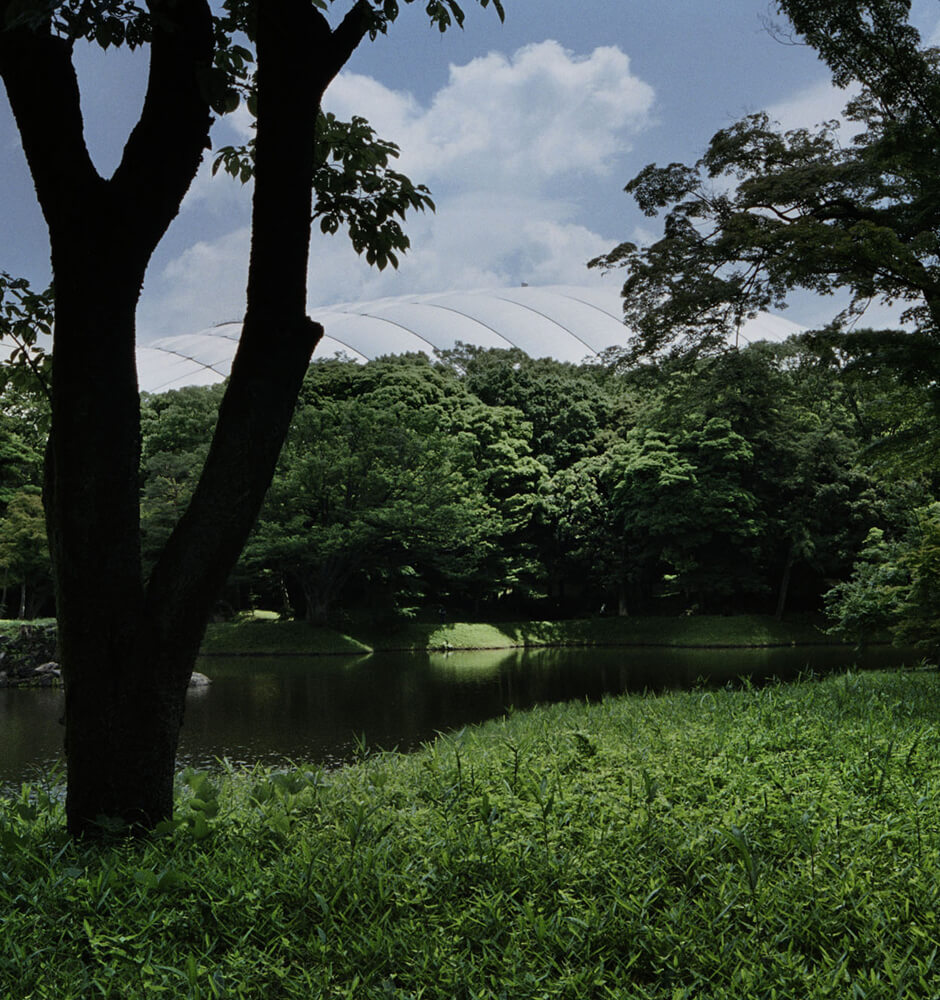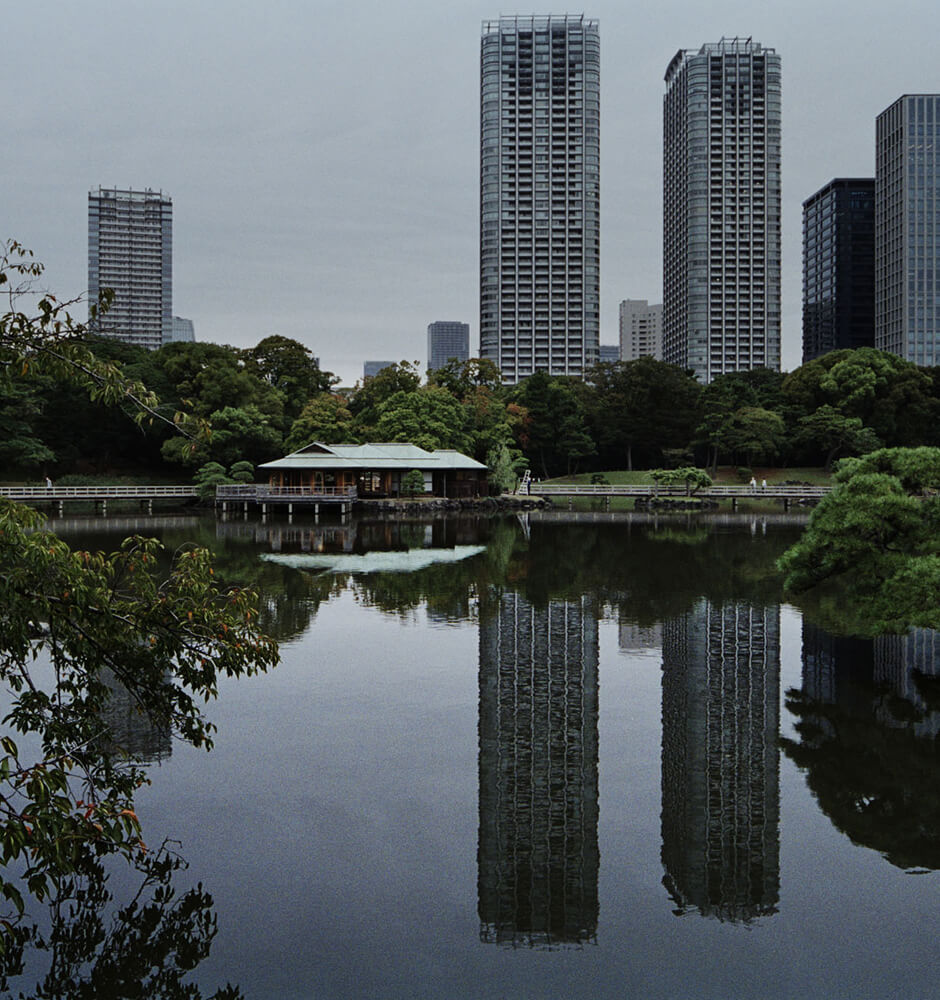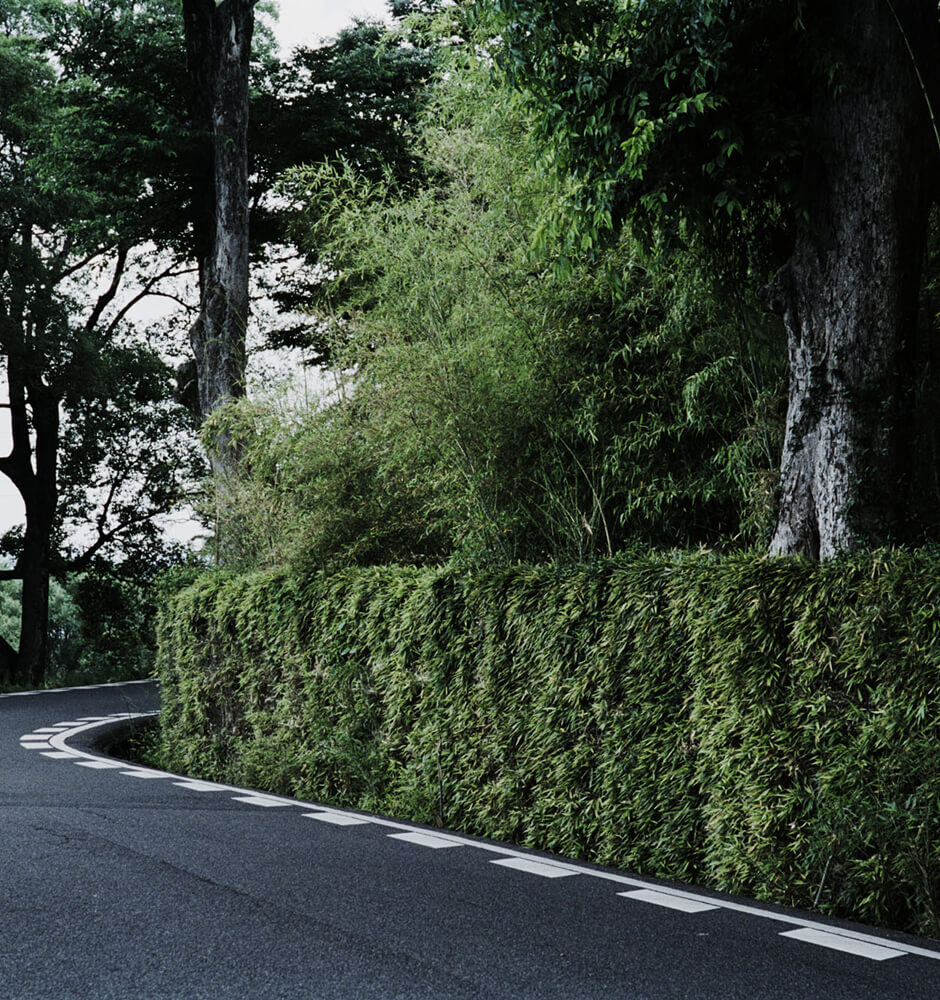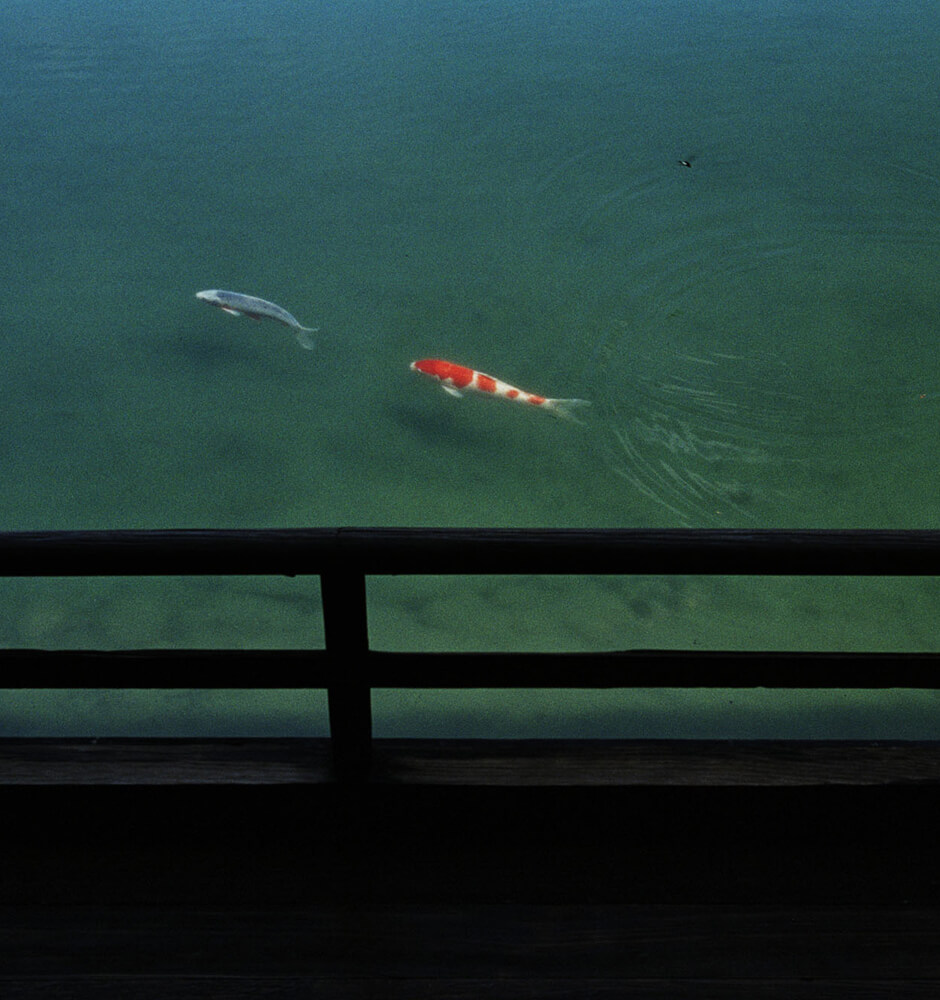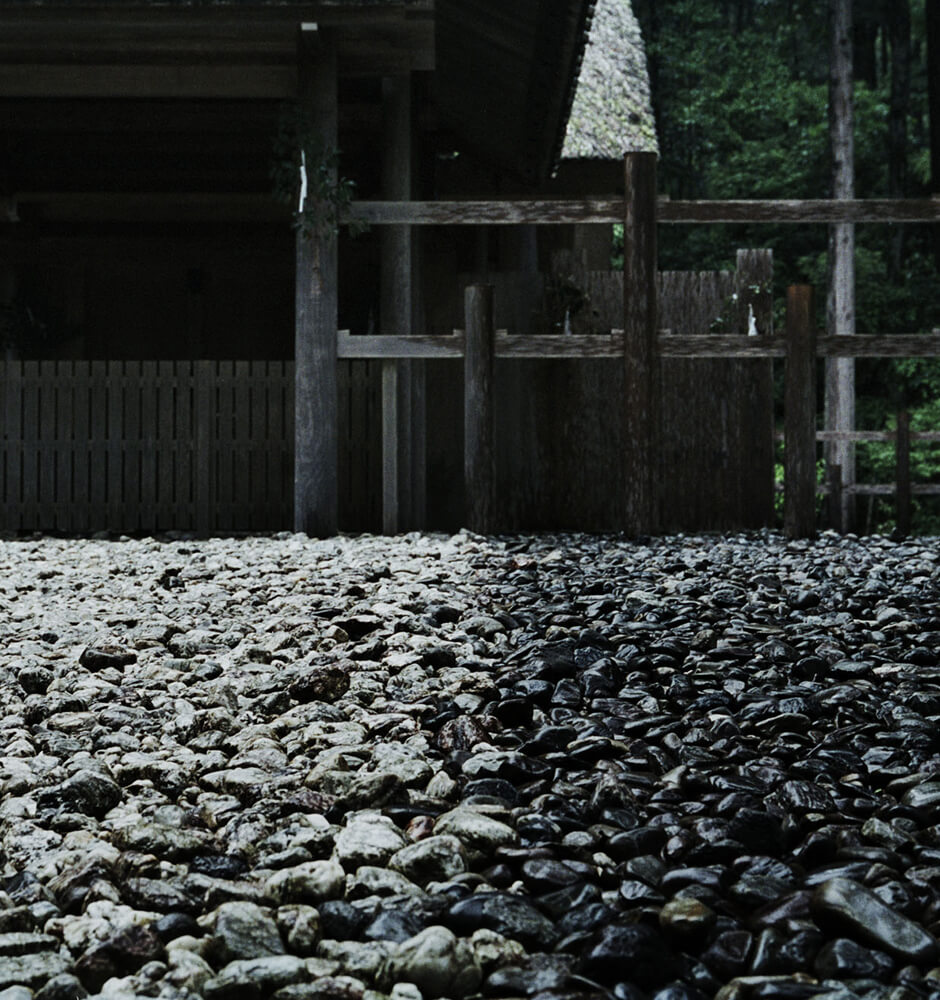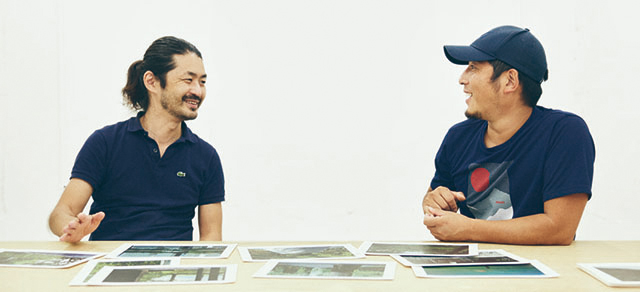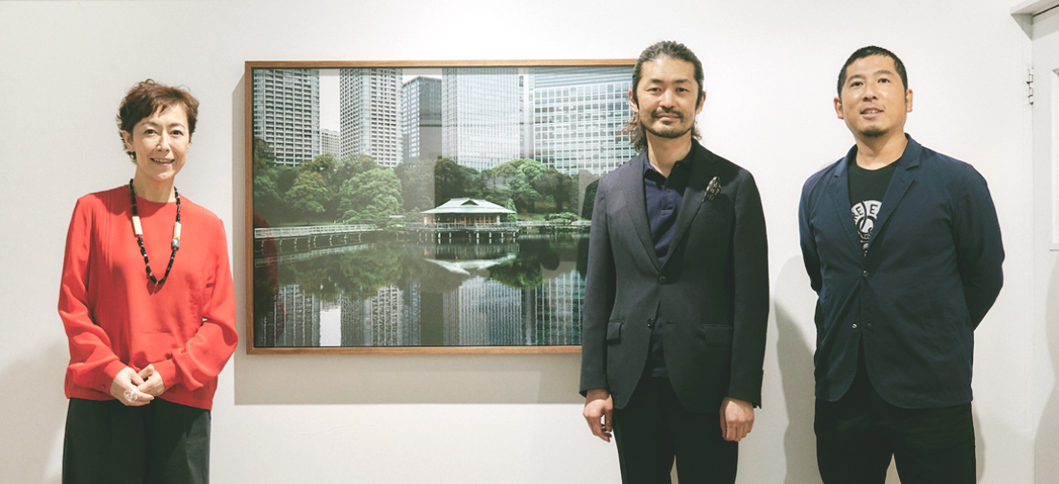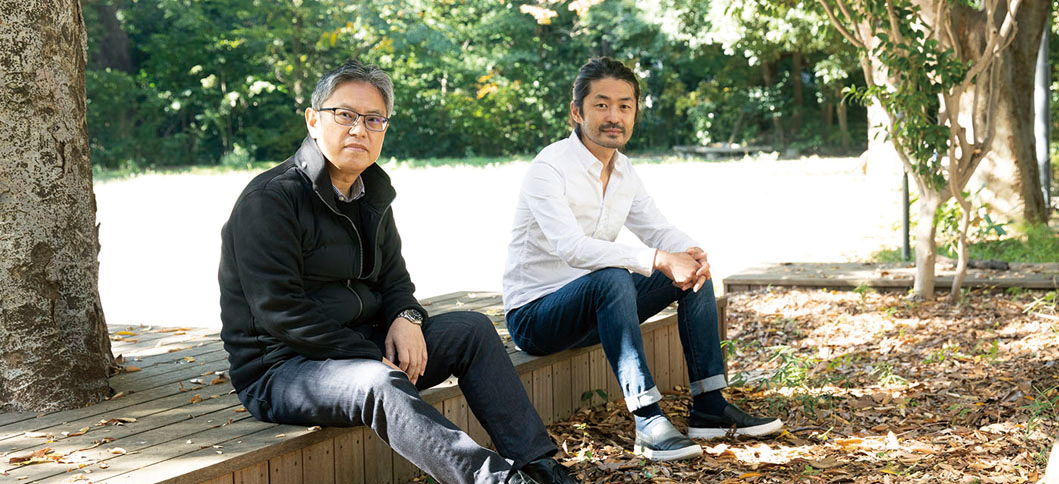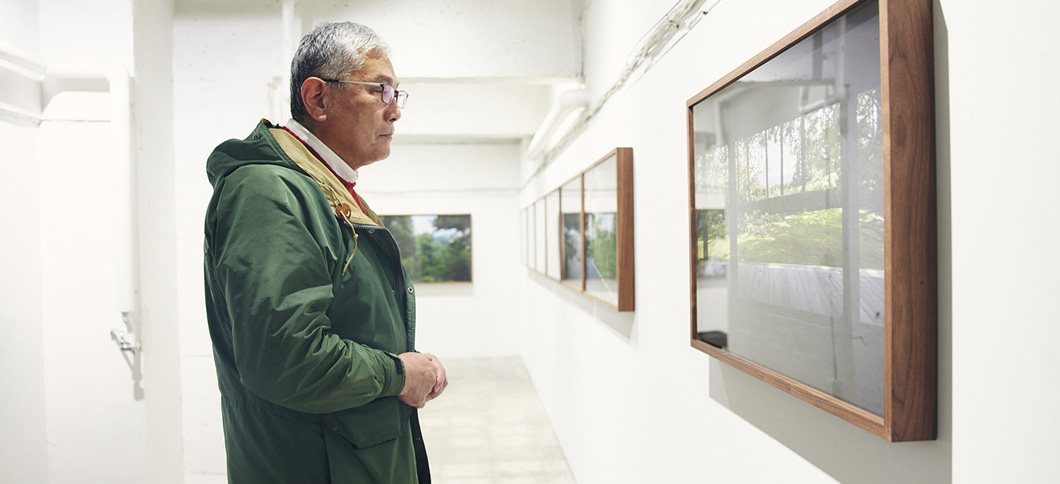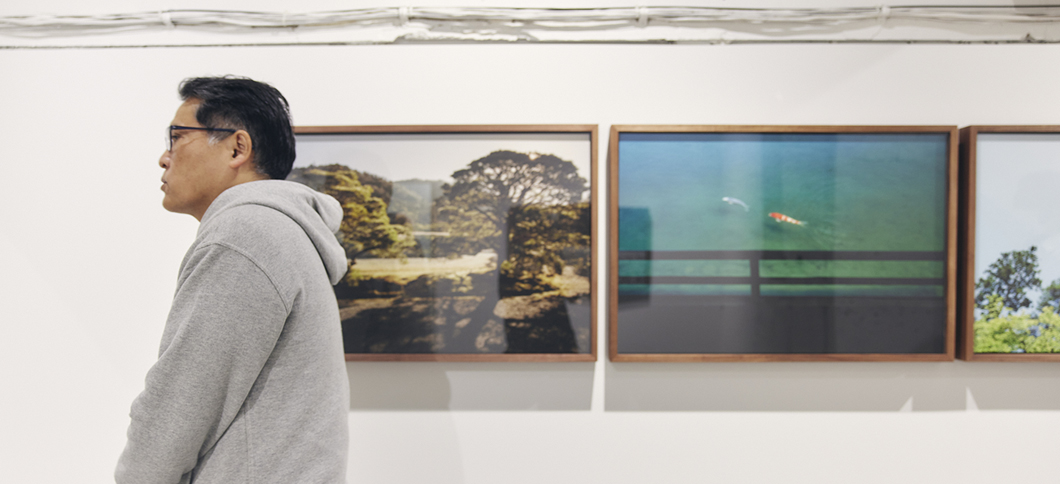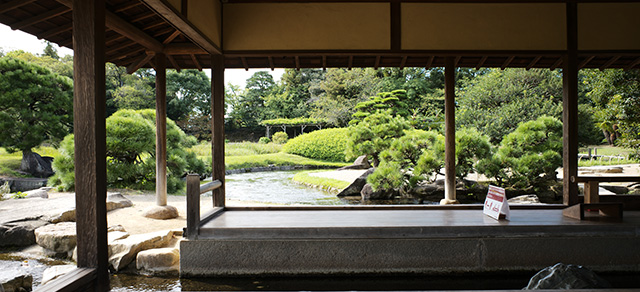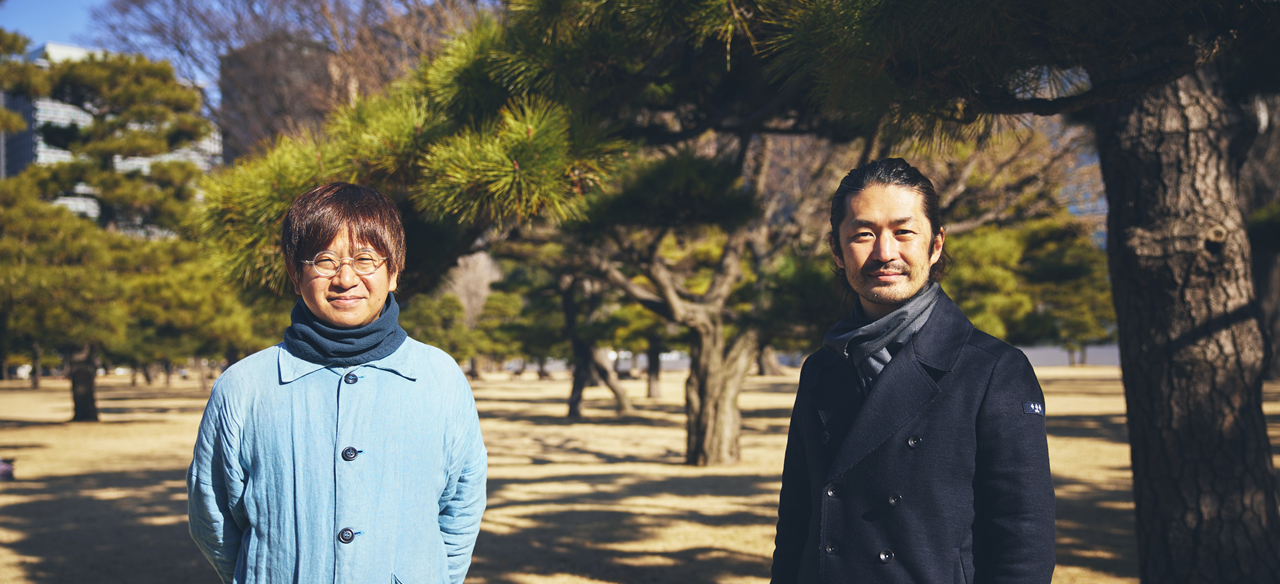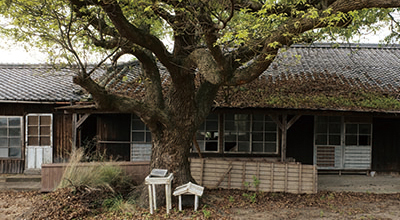What makes shakkei compelling?
Architect Makoto Yamaguchi and photographer Kentaro Kumon set out
on a journey in search of answers.
Architect Makoto Yamaguchi began thinking about shakkei, or "borrowed scenery," of Japanese gardens, and set out on a journey with the photographer, Kentaro Kumon. While visiting famous gardens all over the country, they contemplated aspects of Japanese culture and looked for what makes borrowed scenery fascinating. As they captured this on camera, the resulting photographs also brought about a new discovery. They had found "neighboring textures," with different materials existing side by side.
DUO’S JOURNEY (Kentaro Kumon and Makoto Yamaguchi)
The duo’s journey begins with the modern shakkei (borrowed scenery) of the mixed sceneries of the old and the new, found in the famous gardens of Tokyo. It ends in the details of the sceneries in the traditional gardens of Kyoto, a city with a rich history. These are appeals of the Japanese garden, seen through the distinct eyes of an architect and a photographer. Their endeavor becomes one that is not confined by the garden walls.
-
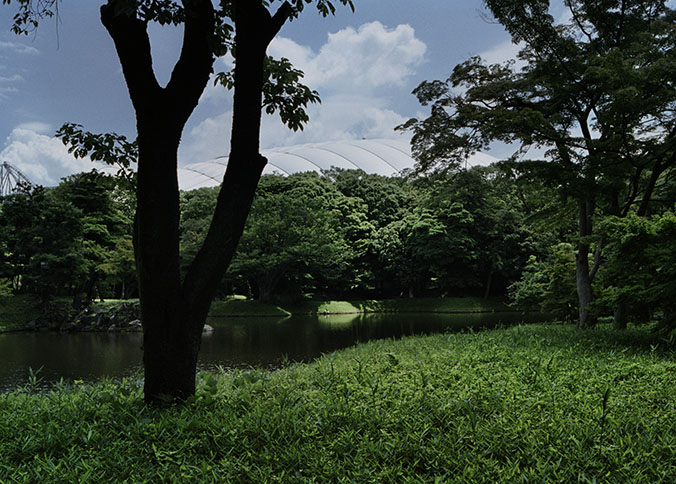
Koishikawa Korakuen Gardens / Tokyo
The historic Japanese garden built in 1629 within separate Edo residence of the Mito domain, used to have Mount Fuji as its shakkei (borrowed scenery)…
-
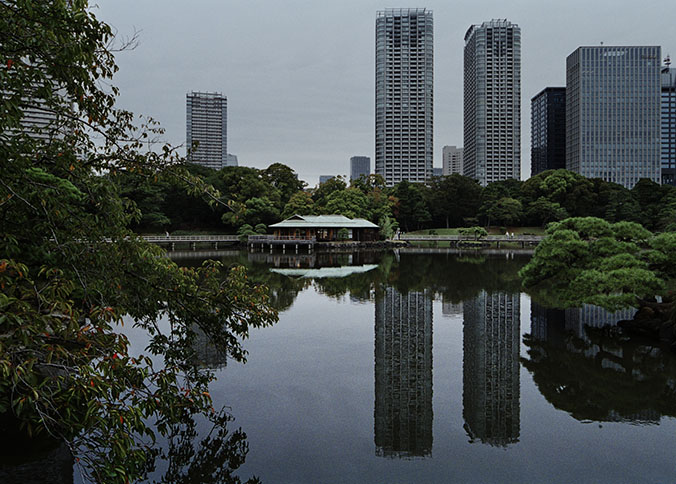
Koishikawa Korakuen Gardens / Tokyo
The historic Japanese garden built in 1629 within separate Edo residence of the Mito domain, used to have Mount Fuji as its shakkei (borrowed scenery)…
-
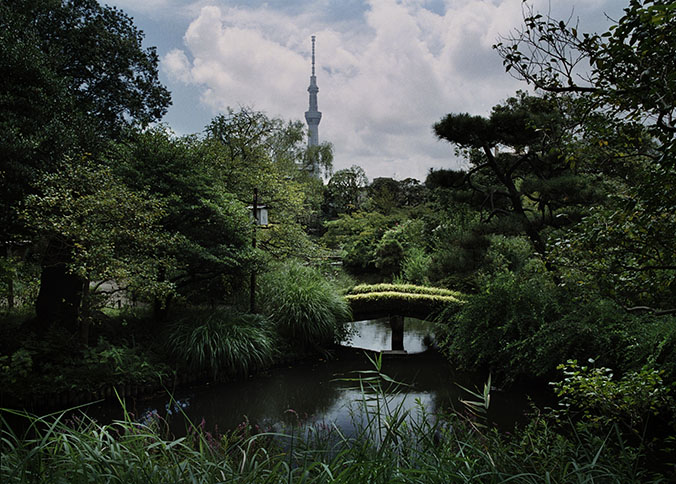
Betsugu of the Ise Inner Shrine, Takihara-no-Miya Shrine / Mie
The historic Japanese garden built in 1629 within separate Edo residence of the Mito domain, used…to...
-
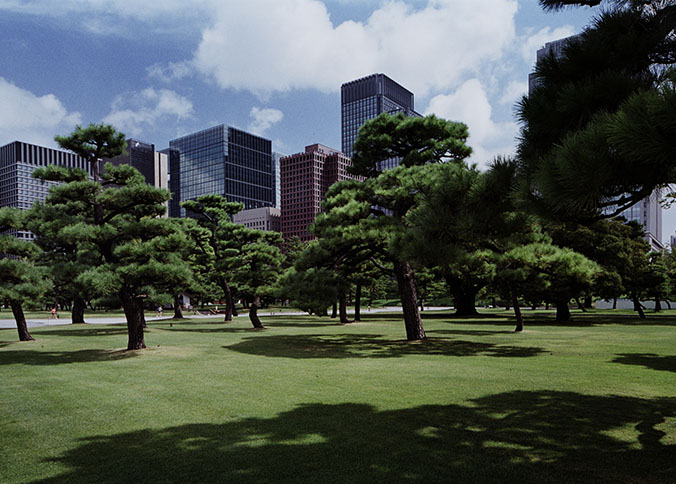
Koishikawa Korakuen Gardens / Tokyo
The historic Japanese garden built in 1629 within separate Edo residence of the Mito domain, used to have Mount Fuji as its shakkei (borrowed scenery)…
-
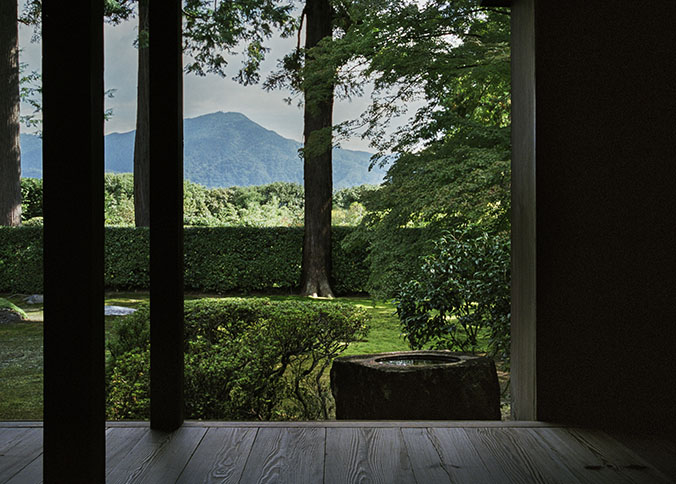
Koishikawa Korakuen Gardens / Tokyo
The historic Japanese garden built in 1629 within separate Edo residence of the Mito domain, used to have Mount Fuji as its shakkei (borrowed scenery)…
-
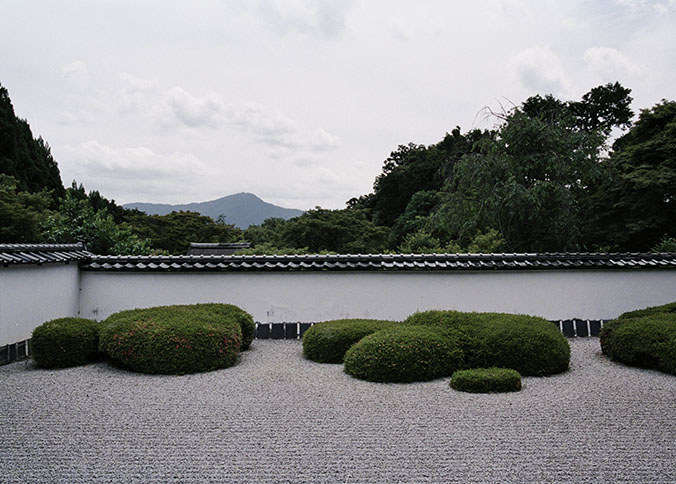
Daikaku-ji Temple, Osawa-no-ike pond / Kyoto
The historic Japanese garden built in 1629 within separate Edo residence of the Mito domain, used…to... have Mount Fuji as its shakkei (borrowed scenery)…
SOLO JOURNEY (Makoto Yamaguchi)
While working on many international projects, the architect inside me decided to stop and think about what inspires my designs. I returned to my alma mater, Tokyo University of the Arts, and enrolled in a doctoral course in the history of Japanese architecture. It was then, seeing how modern architecture has become the shakkei, or "borrowed scenery," for Japanese gardens, that I realized it had something in common with my pursuit of creating designs that resemble natural landscapes. And so, I started my journey alone, visiting gardens with borrowed scenery.
-
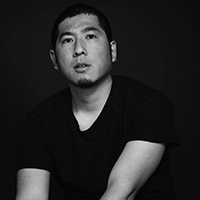
Kentaro KUMON
A photographer, born in 1981. Works actively mainly in reportage and portraits, as well as in a wide range of genres including magazines, books and advertising. Concurrently creates photo works both domestically and internationally with the theme of "scenes created by human life". Recently exhibited and published a collection of agricultural landscapes of Japan titled, "TAGAYASUHITO (Cultivators)". Also, currently working on a series that explores the connections between geographical features such as rivers, peninsulas and human life. In 2012, awarded the Newcomer’s Award from the Photographic Society of Japan for the work titled "Goma no Yohinten (Goma’s Foreign Goods Store)".
www.k-kumon.net -
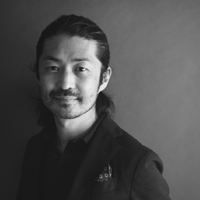
Makoto YAMAGUCHI
Makoto Yamaguchi is an architect, born in 1972 in Chiba Prefecture, Japan. With a master’s degree in architecture from the Graduate School of Fine Arts at Tokyo University of the Arts, he established his architect’s office Makoto Yamaguchi Design in 2001. His designs, seemingly simple at first glance, are actually the integration of a multitude of details based on deep deliberation. One of his early works "Villa/Gallery in Karuizawa," which was featured in T: The New York Times Style Magazine, has been introduced in media outlets worldwide, and has attracted many requests for visits from people around the world including Aesop founder Dennis Paphitis. Yamaguchi’s recent works mainly consist of resort villas and large-scale second homes. His outstanding artistry has earned him international acclaim, winning many awards including Winner of the International Architecture Awards and the Best Residential Project of the Wallpaper* Design Awards.
www.ymgci.net
